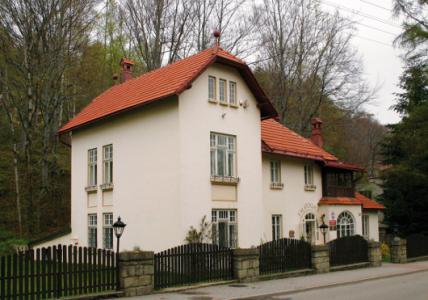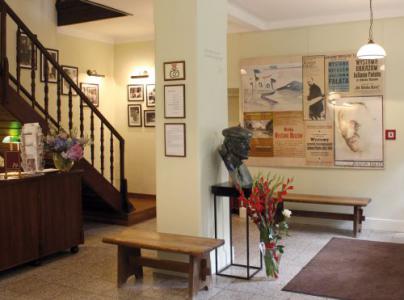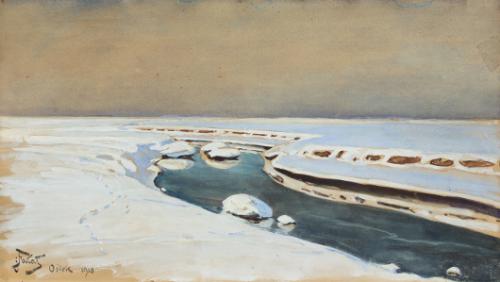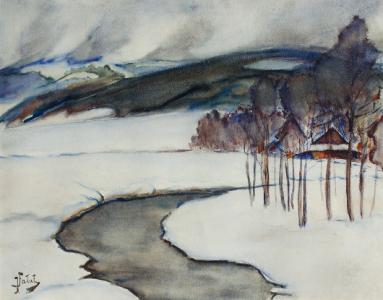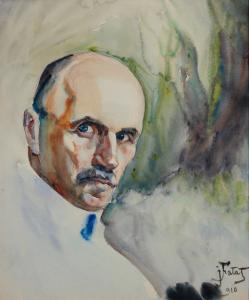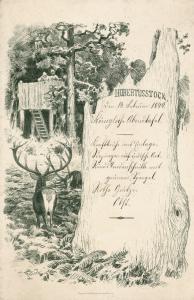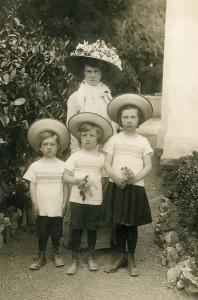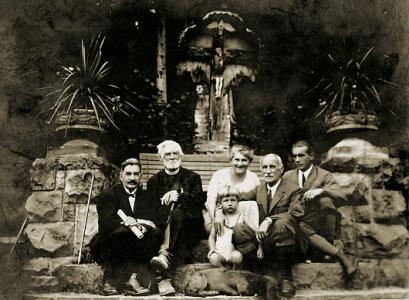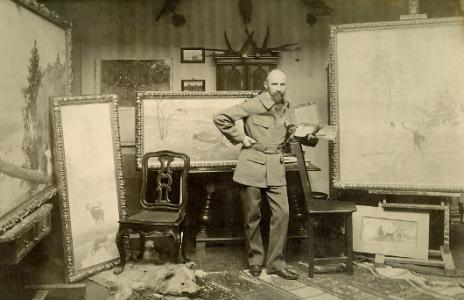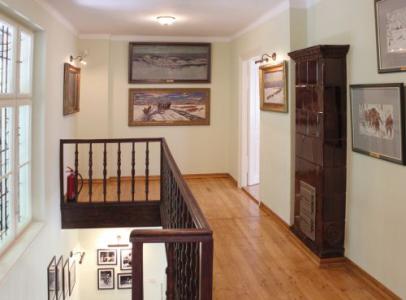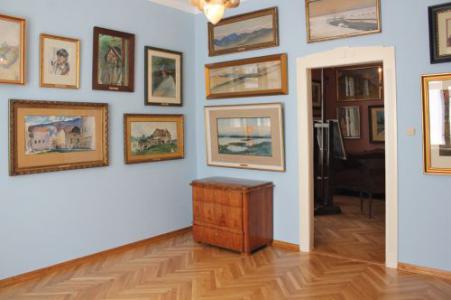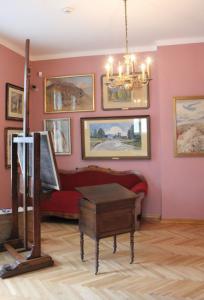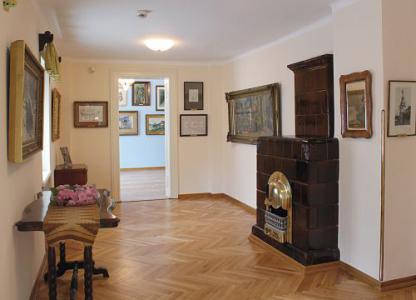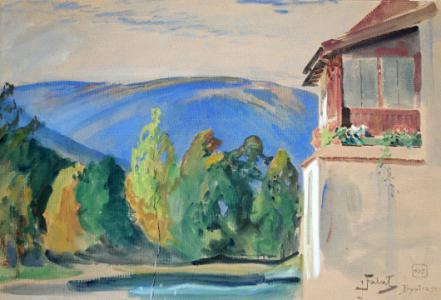Julian Falat – a painter and art collector
The works on display include oil paintings, watercolour and lithographic compositions with a hunting theme, either direct representations or recollections of hunting expeditions in Nieśwież or Hubetrusstock. These are painted records of various aspects of hunting such as the battue, stalking the game, the return of hunters with trophies or hunters resting by the campfire. Our attention is drawn to an oil painting on canvas from 1888 called Polowanie na niedźwiedzicę z małymi (Hunting a She-bear and her Young) based on events taking place during the artist’s stay in Nieśwież. It was here in the forests of Poleski National Park that he took part in the great winter hunts, organised by duke Antoni Radziwiłł for duke Wilhelm Hohenzollern, the future German emperor.
We can see watercolour compositions created during the fourteen years when the artist was the rector of the School, and then the Academy of Fine Arts in Cracow. Examples of such works include Krakowianki przed lustrem (Ladies from Cracow in front of Mirror) from 1903 and a cityscape of Cracow from 1896; numerous landscapes painted on his travels and stays in Austria, Slovenia and Toruń; views of the backwaters in Osiek where the artist would frequently visit Gabriela and Oskar Rudziński.
An alpine theme can be seen in the panoramas of the Tatra mountains, synthetical representations of their crags, as well as in the summer and winter landscapes of the Beskid mountains, including those around Bystra held so dear by him. Of note is a watercolour painting from 1911 called Wezbrany potok po powodzi (Swollen Stream after a Flood), along with a large-format watercolour composition of 1915, Kwitnące sady w Bystrej (Bystra Orchards in Blossom) and a watercolour and gouache work, painted five years earlier, on an ochre cardboard background showing the beech trees on the escarpment just above the Julian Fałat Museum. To these should be added the compositions depicting a stream winding and spilling through the part snow-covered and part ochre-hued fields during the spring thaws.
The artist’s works also include numerous self-portraits and portraits of a generic nature. There are images of Tatra highlanders from Poronin and Zakopane; forester Grzyb from Bystra; the artist’s young female neighbour Smolkowa; Hucul, a young Jew engrossed in his reading, and many others. His paintings are complemented by pencil portraits and genre scenes.
One of the rooms has been arranged as the master’s last workshop. In it are his easels, a table for painting accessories and a traveller’s case which he would always take with him on his numerous trips and local excursions.
His passion for collecting artwork is borne out by his collections of 18th and 19th century sculptures on religious themes and the graphic art of contemporary artists, which included that of Jan Kanty Gumowski, Władysław Lam, Ignacy Pinkas and a painter from Opava, Adolf Zdrazili. All of this is complemented by authentic furniture and everyday objects from the artist’s house.
Enlarged photographs portraying the first exhibition of the artist’s works in 1973 in the newly arranged interiors of the Julian Fałat Museum create a link with the exposition held in the museum almost fifty years ago. The posters and placards from between 1959 and 2003, demonstrating the undertakings associated with subsequent anniversaries celebrated at the Julian Fałat Museum, testify to many years of constant care taken by the Bielsko museum workers for the legacy of the master of watercolour painting and popularisation of his life and work.
